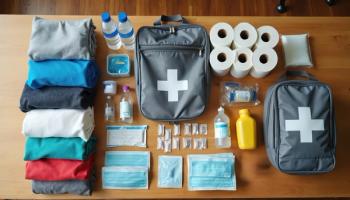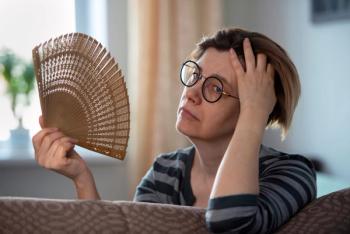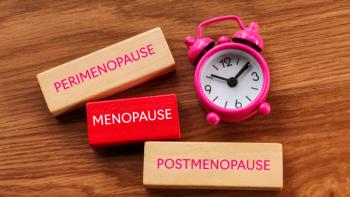
- July 2020
- Volume 88
- Issue 7
Provide Information About Drug Equivalency
Despite opportunity to save money with generic medications, many patients do not understand the options.
As legislators and medical professionals have advocated the control of rising drug prices, generic drugs have long offered a cheaper alternative for patients.
Study results have shown that many patients mistrust generics. However, educating patients on the equivalency and regulation of these drugs can help to dispel reservations.1
The price of generics can be as low as between 2% and 10% of prepatent loss prices, according to investigators, which can lead to considerable savings for patients.1
In a recent survey by OnePoll, 4 in 10 Americans said that they were not well informed when prescribed a new medication. Significantly, 41% of the 1000 respondents reported having unanswered issues after receiving a prescription, and 76% said they were unaware of potential treatment options. Furthermore, 37% said they had little to no control over what the pharmacy gave them.2
Similar findings have been reported in many other surveys, but they also offer the opportunity for pharmacists to better understand patients’ concerns and dispel their misconceptions.
In a systematic review of publications exploring patient, pharmacist, and physician views on generic medications, the authors found that patient confidence and knowledge has improved steadily since the 1970s. This change was attributed to greater communication between health care professionals and patients, as well as mass educational efforts. However, efficacy and safety were still the main barriers to accepting generic substitutions.1
Furthermore, investigators in previous studies found that patients in less developed countries and those with lower education levels tend to be more mistrustful of generics. This appears to still be the case, according to more recent research. Therefore, the authors of the review recommend that further research on patient views should be focused on developing countries, where cost savings are even more urgently needed.1
Notably, the greatest levels of mistrust were seen in patients rather than in health care professionals. The authors noted that general views were reported, including being largely unwilling to accept generics, believing that cheaper options are inferior, and having had negative experiences after taking a previous generic substitution.1
More specific complaints included reports of breakthrough seizures following the substitution of an antiepileptic drug (AED) and reports of being advised by physicians not to accept generic AEDs. Also, some people were of the opinion that only those with limited income were forced to “settle” for generic medications. The results of 1 study showed that nearly half the respondents said they would refuse a generic substitute if it was only to save the health system money.1
Particularly worrisome is that the review’s authors also found reports of adherence issues among patients receiving generic medications. Patients reported that generic substitutions made it more difficult to keep track of their medications and that the appearance or packaging of the medications caused confusion.
According to the results of another study, patients were taking 2 or more equivalent medications concurrently. They did not realize that generic substitutions were equivalent to their branded medications.1
Despite these findings, there were some positive views. In 1 study, a majority of respondents indicated that they did not notice any difference following a generic substitution; according to other studies, patients did not consider generics to be a safety risk. Other research indicates that only a minority of patients believe that branded medications are superior to generics.1
Across all groups in the systematic review—patients, pharmacists, and physicians—there was general agreement that education is a key factor in improving confidence in and increasing the use of generic medications. The investigators called for “myth-busting” education to dispel misinformation in particular, such as the idea that less expensive options mean that they are of lower quality.1
“While acceptance of generic medications is improving, substantial mistrust and lack of confidence remains, particularly within the patient, and, to a lesser extent, physician groups,” the investigators concluded. “A key factor in improving the confidence of these cohorts is the provision of information and education, particularly in the areas of equivalency [and] regulation, and in dispelling myths about generic medicines.”1
REFERENCES
- Dunne SS, Dunne CP. What do people really think of generic medicines? A systematic review and critical appraisal of literature on stakeholder perceptions of generic drugs. BMC Med. 2015;13:173. doi:10.1186/s12916-015-0415-3.
- Survey: many Americans feel uninformed about their prescription medications. American Pharmacists Association. April 30, 2020. Accessed June 25, 2020. https://www.pharmacist.com/article/survey-many-americans-feel-uninformed-about-their-prescription-medications.
Articles in this issue
over 5 years ago
Web Search Data Forecast Lyme Disease Riskover 5 years ago
More Time Outdoors Recently May Increase Tick Bite Incidenceover 5 years ago
Home Infusion Pharmacies Play Critical Role in COVID-19over 5 years ago
Motivational Interviewing: Effective Communication Is Vitalover 5 years ago
OTC Case Studies: Eye Healthover 5 years ago
Diabetes Increases Risk of Some Dermatologic Conditionsover 5 years ago
Patient Experiences Cardiac Arrest When Taking 2 Medicationsover 5 years ago
Lyme Disease May Lead to Disabling Posttreatment Problemsover 5 years ago
What Are the Best Drugs to Treat Diabetes?over 5 years ago
Case Studies (July 2020)Newsletter
Stay informed on drug updates, treatment guidelines, and pharmacy practice trends—subscribe to Pharmacy Times for weekly clinical insights.















































































































































































































